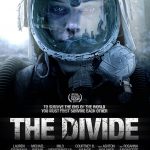The Djinn (2021)
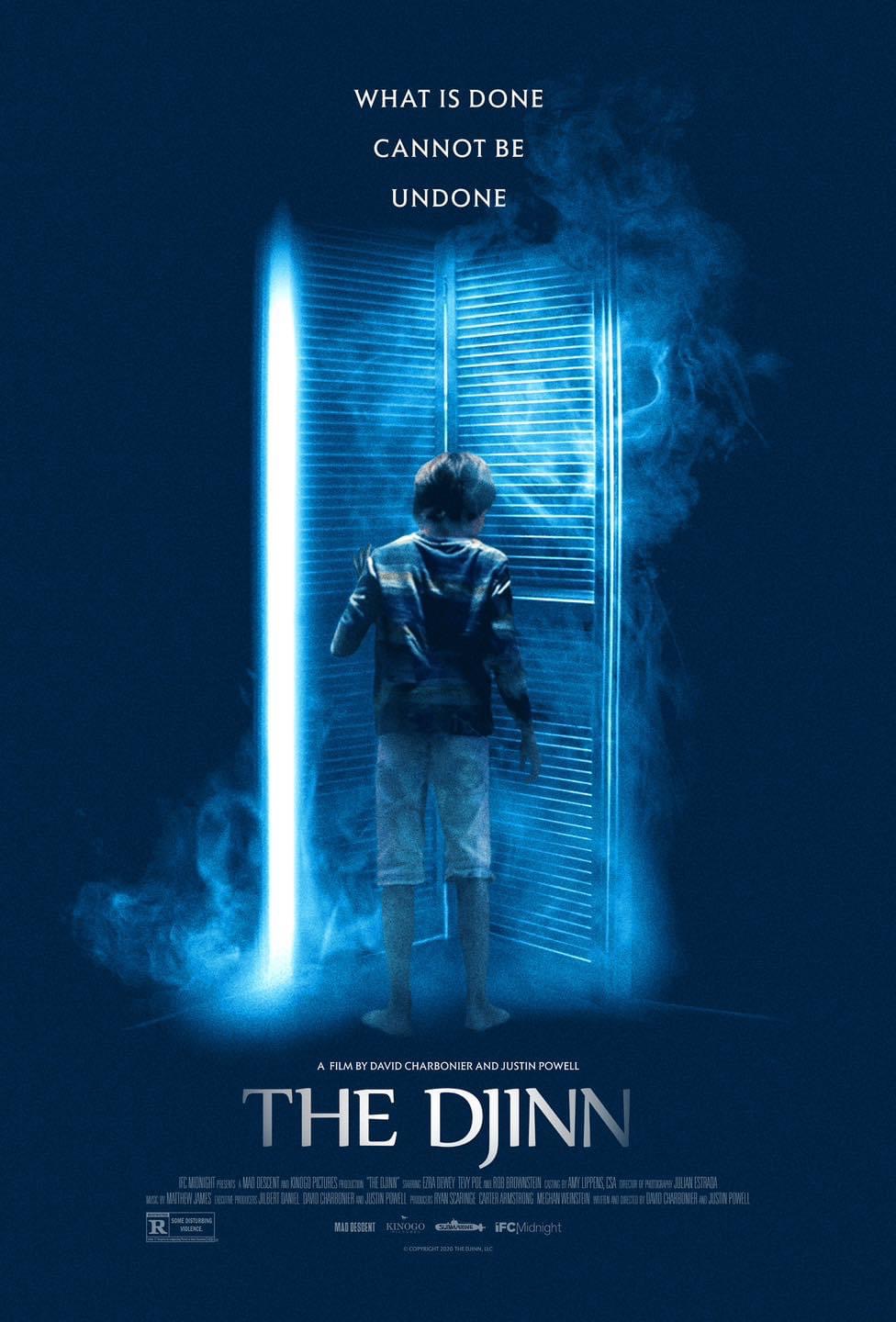
The Djinn (2021), directed by David Charbonier and Justin Powell, is an indie horror film that delivers a nerve-wracking, minimalist supernatural thriller. The film relies heavily on atmosphere, tension, and a confined setting to create a psychological cat-and-mouse game between a young, mute boy and a malevolent supernatural entity. With its small cast, primarily set in one location, The Djinn focuses on mood, suspense, and primal fears, evoking an experience reminiscent of classic horror while incorporating modern stylistic elements.
Suggested videos for you:
Plot Overview
The story centers around 12-year-old Dylan Jacobs (Ezra Dewey), a mute boy who is struggling with his inability to speak and the emotional trauma stemming from his mother’s death. Dylan lives with his father, Michael (Rob Brownstein), who works as a radio DJ on the night shift. After moving into a new apartment, Dylan discovers a mysterious book containing rituals and spells. One particular ritual offers to grant the heart’s deepest desire, and Dylan, desperate to speak again, decides to perform it. However, he soon learns that wishes come with a terrifying price.
By performing the ritual, Dylan inadvertently summons a Djinn, a supernatural entity from Middle Eastern folklore known for its malevolent nature and for granting wishes in twisted, dangerous ways. To survive and have his wish granted, Dylan must outlast the Djinn until midnight. What ensues is a tense, claustrophobic battle of survival, as the Djinn—capable of shape-shifting into human forms—hunts Dylan through the confines of their apartment. Dylan must rely on his ingenuity and resilience to outsmart the entity and survive the night.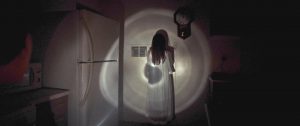
Themes and Symbolism
The Djinn explores themes of grief, loneliness, and the dangers of desire. At its core, the film reflects on how wishing for something without fully understanding the consequences can lead to disaster. Dylan’s longing to regain his voice represents his deeper desire to connect with the world and overcome the isolation he feels as a mute boy. His muteness, which isolates him physically and emotionally, serves as a symbol of his internal struggles, particularly in the wake of his mother’s death. The film subtly implies that Dylan harbors guilt and unresolved trauma, and his wish is driven not only by the desire to speak but also by a wish to be whole again.
The Djinn, drawn from ancient mythology, acts as a symbol of the darker side of human desire. Traditionally, Djinn are known to twist the wishes they grant, often causing harm to those who make them. In the film, the Djinn embodies the concept of unintended consequences—Dylan’s wish for a voice sets into motion a dangerous and nightmarish sequence of events. The Djinn’s shape-shifting abilities allow it to take the form of individuals from Dylan’s memories and nightmares, further representing how unresolved grief and trauma can manifest in destructive ways.
Isolation is another key theme, both physically and emotionally. The apartment, a confined and lonely space, becomes a metaphor for Dylan’s emotional state, trapping him with his fears and his desperate need for connection. The fact that Dylan is alone for most of the film, especially without the ability to call for help, heightens the sense of isolation and helplessness.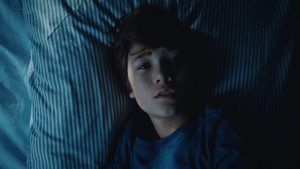
Performances
Ezra Dewey delivers a remarkable performance as Dylan, despite the lack of spoken dialogue. His portrayal of a mute boy navigating the emotional and physical terrors of the night is both vulnerable and resourceful. Dewey’s ability to convey fear, determination, and desperation through his body language and facial expressions is impressive. In a film that relies so heavily on the protagonist’s non-verbal communication, Dewey successfully engages the audience, making Dylan a sympathetic and compelling character.
Rob Brownstein, who plays Dylan’s father, has a smaller role but serves as an important figure in Dylan’s life. Through flashbacks and brief interactions, the film hints at their close, albeit strained, relationship. Michael’s absence during most of the film adds to Dylan’s isolation, leaving him to face the supernatural threat alone. The emotional weight of their relationship is felt throughout the movie, particularly in Dylan’s feelings of loneliness and desire for connection.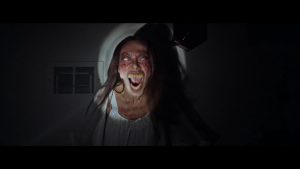
Cinematography and Direction
David Charbonier and Justin Powell, who also co-wrote the screenplay, demonstrate a strong grasp of visual storytelling and tension-building. The film takes place almost entirely within the confines of a modest apartment, but the directors use this setting to their advantage. The cramped, dimly lit apartment becomes a labyrinth of fear, with narrow hallways, shadowy corners, and reflective surfaces contributing to the film’s suspenseful atmosphere. The limited space intensifies the sense of claustrophobia, trapping Dylan—and the audience—inside with the Djinn.
The cinematography, handled by Julián Estrada, plays a crucial role in establishing the film’s mood. Estrada uses tight camera angles and intimate framing to immerse the viewer in Dylan’s experience, heightening the tension as he hides and runs from the Djinn. The film’s use of lighting is particularly effective, with darkness and shadows playing a significant role in creating a constant feeling of unease. The moments when the Djinn appears in various human forms are skillfully shot to keep the audience on edge, as the creature can appear anywhere, often without warning.
The filmmakers also make excellent use of sound design, especially given that Dylan is mute. The eerie silence that pervades much of the film amplifies every creak, thud, and whisper, making the environment itself feel threatening. The moments when the Djinn’s presence is signaled by subtle auditory cues are among the most unnerving, as the audience is left to imagine what may be lurking just out of sight.
Special Effects and Creature Design
Despite its low budget, The Djinn excels in its portrayal of the supernatural entity. The Djinn itself is not frequently shown in its full form, but when it does appear, it is a terrifying presence. The practical effects used to create the Djinn are well-executed, with its gnarled, shadowy appearance invoking a sense of ancient evil. The filmmakers wisely keep the Djinn shrouded in darkness for much of the film, which adds to the tension and allows the audience’s imagination to fill in the gaps.
The Djinn’s ability to shape-shift into different people from Dylan’s life and memories adds a psychological dimension to the horror. These transformations allow the Djinn to play on Dylan’s fears and traumas, making the threat feel both personal and supernatural. The entity’s mimicry of people Dylan knows creates moments of eerie disorientation, as he is forced to confront not just a monster but his own emotional scars.
Pacing and Tension
The Djinn is a lean, 80-minute film that maintains a steady pace from the moment the ritual begins. The film’s short runtime works in its favor, as it keeps the narrative focused and the tension high without unnecessary padding. Charbonier and Powell carefully balance moments of quiet suspense with bursts of action, creating a rhythm that keeps the audience engaged throughout.
However, the film’s minimalism may not appeal to all viewers. The tight focus on Dylan’s immediate struggle with the Djinn leaves little room for deep character development or exploration of the mythology surrounding the entity. While the film hints at Dylan’s emotional trauma and the Djinn’s malevolent nature, it doesn’t delve deeply into these aspects, instead opting for a straightforward survival narrative. This might leave some viewers wanting more backstory or explanation, particularly regarding the Djinn’s origins or the rules governing its powers.
Conclusion
The Djinn is a tense, atmospheric horror film that succeeds on the strength of its simplicity and mood. It effectively uses its limited setting and budget to create a claustrophobic, suspenseful experience, with a strong central performance by Ezra Dewey. The film’s exploration of desire, grief, and the consequences of meddling with forces beyond one’s control gives it thematic weight, while the Djinn’s supernatural menace provides plenty of scares.
Though it may not offer the complex storytelling or mythology that some horror fans crave, The Djinn delivers a tight, focused horror experience that lingers long after the credits roll. It’s a film that understands the power of suggestion and atmosphere, using silence, shadows, and fear of the unknown to craft a chilling tale of survival.








